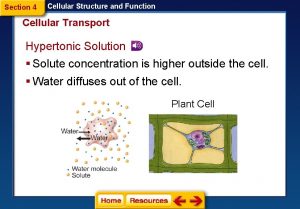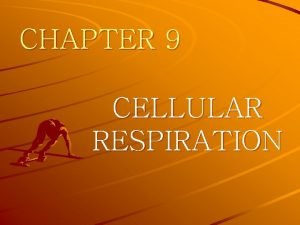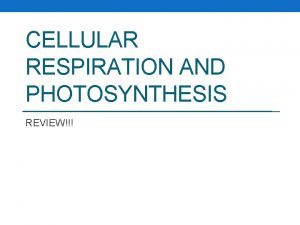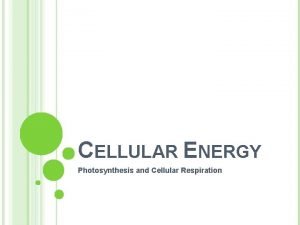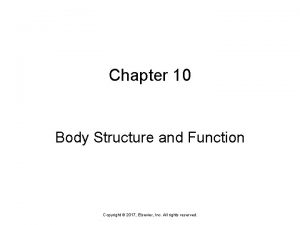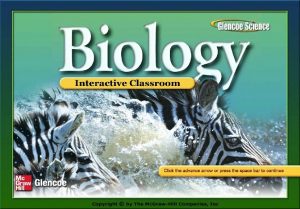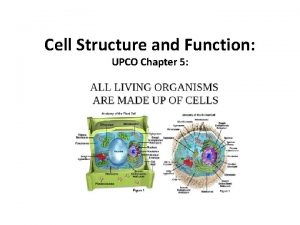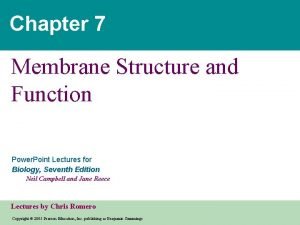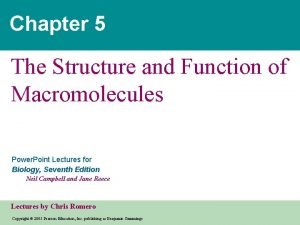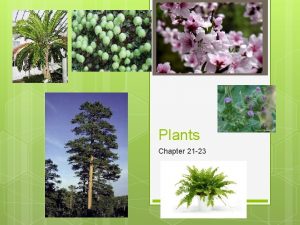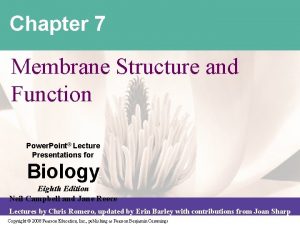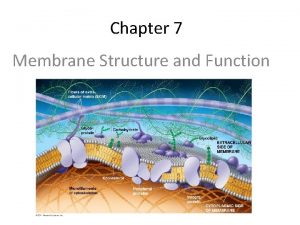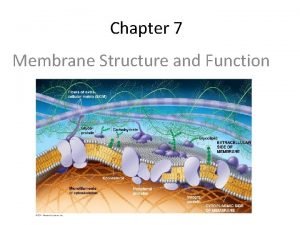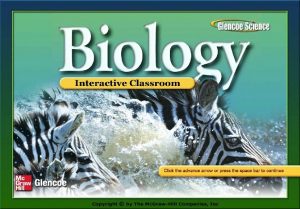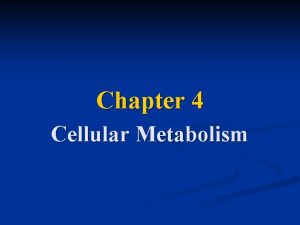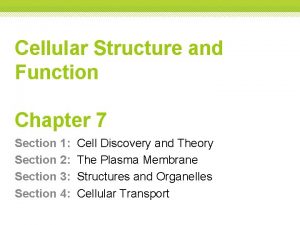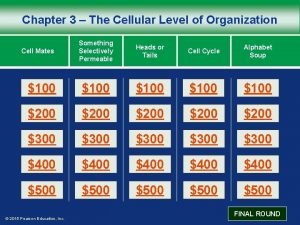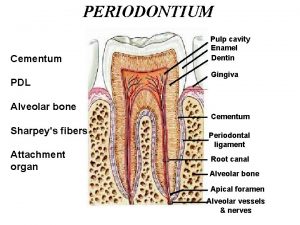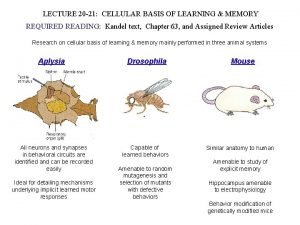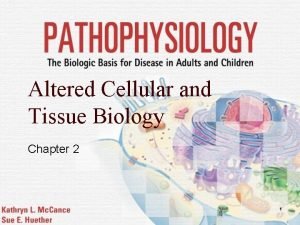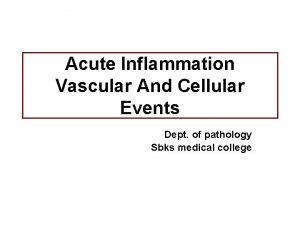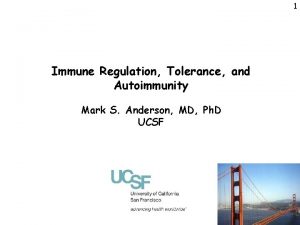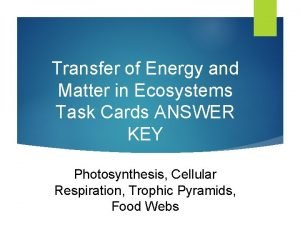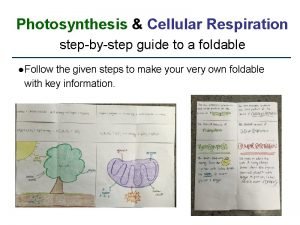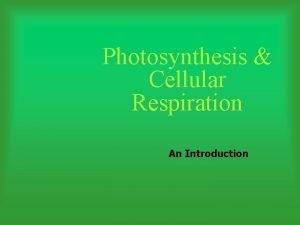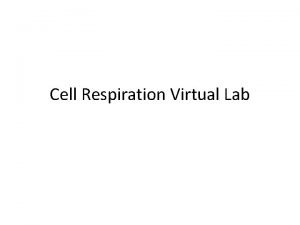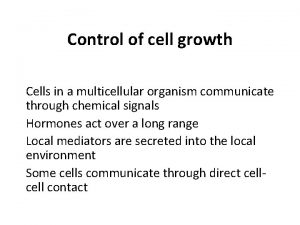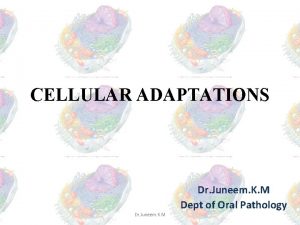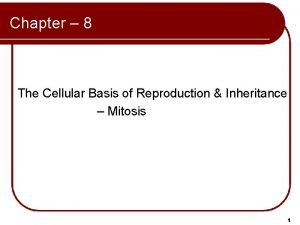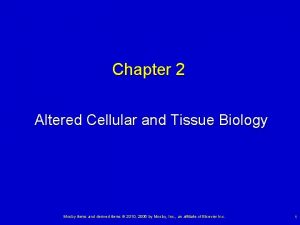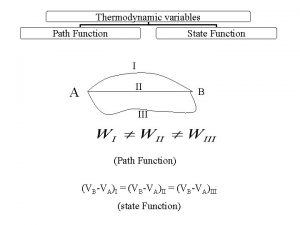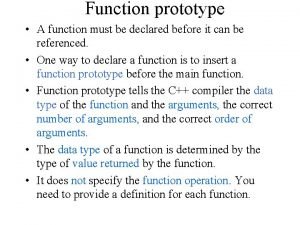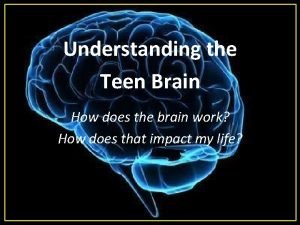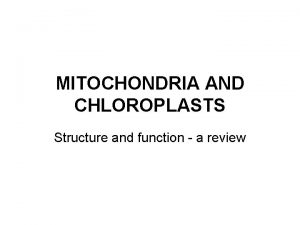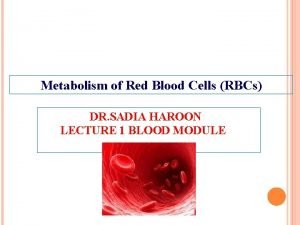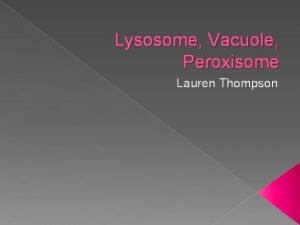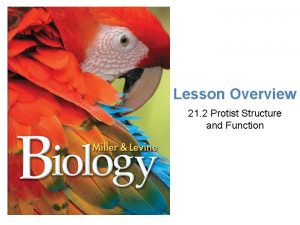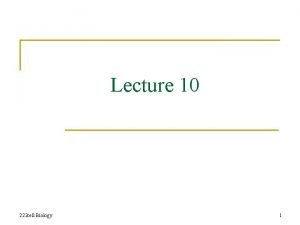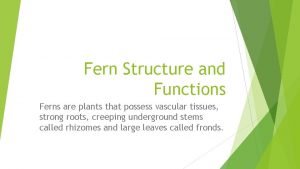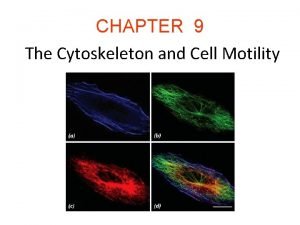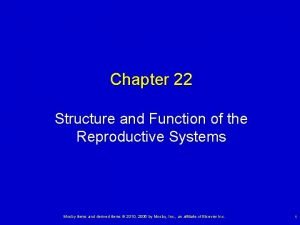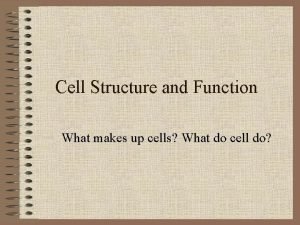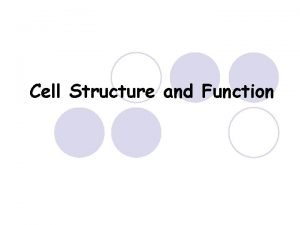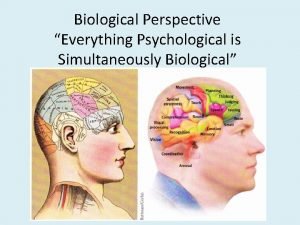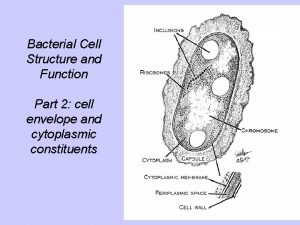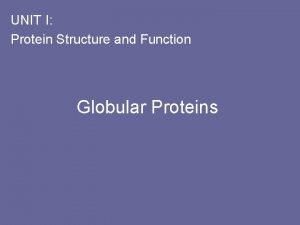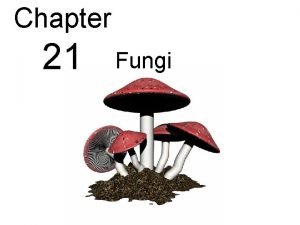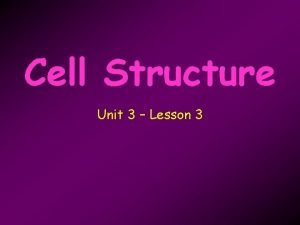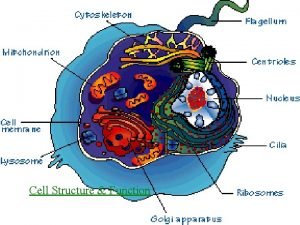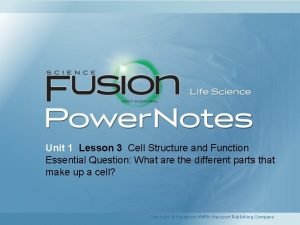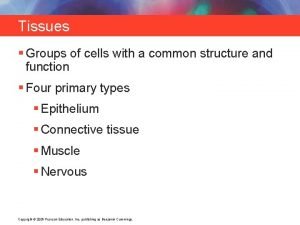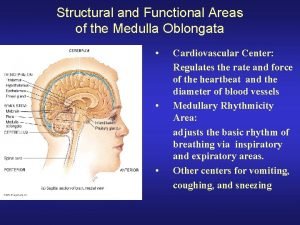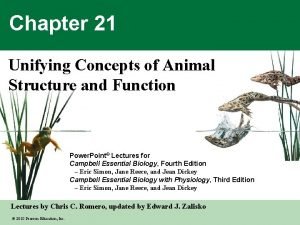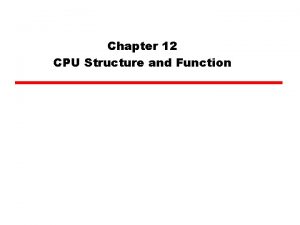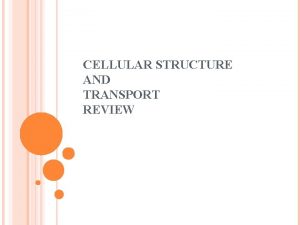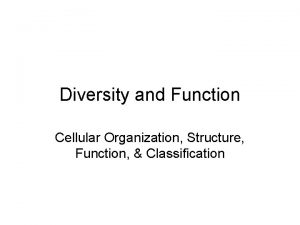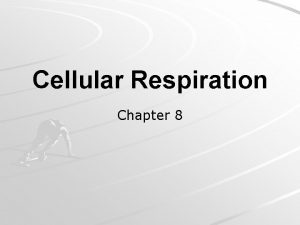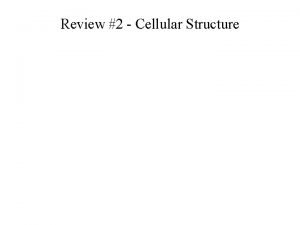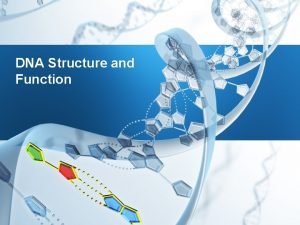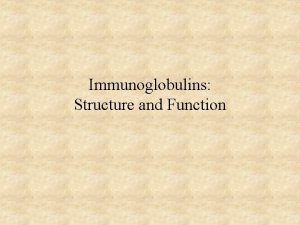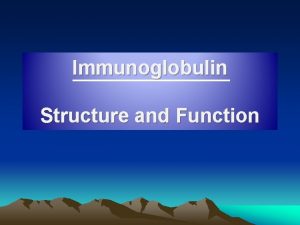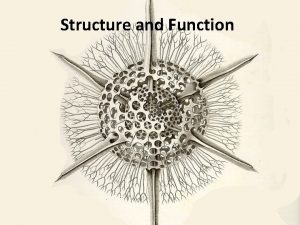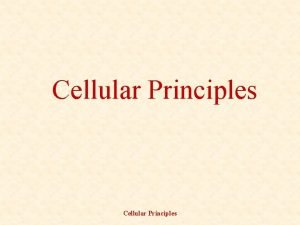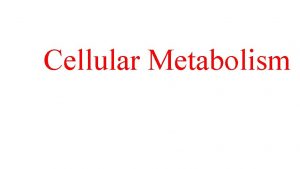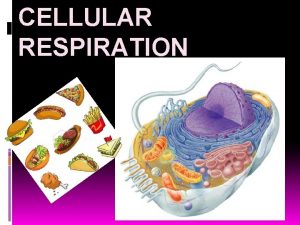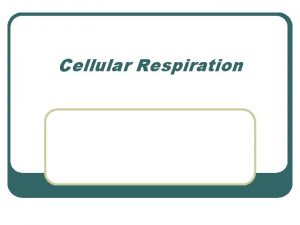Chapter 7 Cellular Structure and Function 7 1

















































































- Slides: 81

Chapter 7 Cellular Structure and Function 7. 1 Cell Discovery and Theory 1

The History of the Cell Theory Cells are the basic units of living things ¡ Before microscopes people believed diseases were caused by curses and supernatural spirits (wrath of God) ¡ The idea that a living thing like a bacteria could cause disease or infection never occurred. Why? ¡ 2

Development of the Light Microscope ¡ Today's microscope is a compound microscope with two lenses l l ¡ Eyepiece lens Objective lens Can magnify 1500 times 3

Simple Light Microscope ¡ ¡ ¡ Developed by Anton van Leeuwenhoek in the mid 1600 One lens Much like a magnifying glass 4

The Cell Theory ¡ ¡ ¡ Robert Hook First to use the term “cell” Looked a cork under a microscope, saw the cell walls 5

Robert Hook ¡ ¡ ¡ Contemporary of Anton van Leeuwenhoek English Published and encouraged others to use microscopes 6

Matthias Schleiden ¡ ¡ 1838 German botanists Examined plants of all types All plants are made of cells 7

Theodore Schwann ¡ ¡ ¡ 1839 German zoologist Contemporary of Schleidens Examined animal tissues of many types All animals are made of cells 8

Rudolph Virchow ¡ ¡ ¡ 1855 German physician All cells come from preexisting cells 9

The Cell Theory 1. All organisms are composed of one or more cells ¡ 2. The cell is the basic unit of organization of all organisms ¡ ¡ 3. Unicellular or multicellular Structure Function All cells come from preexisting cells 10

Technology Since the 1800’s Compound light microscopes continued to improve so that bacteria were able to be classified ¡ Most magnification possible with light microscopes cannot see inner cell parts ¡ 11

Electron Microscopes Developed in the 1940’s ¡ Uses magnets to focus a beam of electrons (in place of light) ¡ Can magnify 500, 000 X ¡ Several types ¡ l l l Scanning: looks at surface; get 3 -D Transmission: looks at interior Scanning-Tunneling: atoms on surface 12

Microscope Aids Both light and electron microscopes use dyes and stains which helps to contrast cell and parts ¡ Most dyes and stains kill the cells ¡ Most specimens of electron microscopes need to be in a vacuum and/or coated with gold ¡ 13

Two Basic Cell Types Prokaryote ¡ Have plasma membrane ¡ No internal membrane bound structures ¡ Unicellular ¡ Smaller in size ¡ No specialization ¡ Example: bacteria Eukaryote ¡ Have plasma membrane ¡ Internal membrane bound structures ¡ Unicellular and multicellular ¡ Larger size ¡ Much specialization ¡ Example: animal 14

Two Basic Cell Types Prokaryote Eukaryote 15

Two Basic Cell Types 16

Chapter 7 Cellular Structure and Function 7. 2 The Plasma Membrane 17

Plasma Membrane Diagram 18

Plasma Membrane Micrograph 19

Plasma Membrane Structure ¡ ¡ ¡ Made of phospholipid bilayer Polar ends are hydrophilic Nonpolar ends are hydrophobic 20

Plasma Membrane Function ¡ ¡ Job of plasma membrane is homeostasismaintain balance For cells to survive they must keep the inside in and the outside out, yet allow some materials to move into and out of the cell 21

Structure Fits Function The structure of the plasma membrane (how it is put together) allows the plasma membrane its function or job, selective permeability ¡ Selective permeability: the ability to allow some materials into or out of the cell but not other materials ¡ 22

Selective Permeability Out side of cell is different from inside of cell 23

Structure Fits Function ¡ ¡ Both the inside of the cell and the outside are water environment so the hydrophilic ends face in and out The hydrophobic fatty tails are in the middle so that materials can’t pass through easily 24

Structure Fits Function Role of proteins in plasma membrane ¡ Channels or tunnels for substances to pass through with specific fit ¡ Identification of organism and tissue type ¡ Signal sending proteins ¡ Provide support for the phospholipids 25

Plasma Membrane Proteins 26

Plasma Membrane Cholesterol stabilizes the plasma membrane in animal cells ¡ Animal cells have no cell wall as do plant cell ¡ High blood cholesterol is a risk factor for heart disease and stroke ¡ Animals (including us) produce cholesterol for the stabilization of the cell membrane ¡ 27

Fluid Mosaic Model 28

Fluid Mosaic Model FLUID: Plasma membrane in constant motion with the phospholipids of one layer moving one direction and the phospholipids of the other layer moving in the opposite direction ¡ MOSAIC: something consisting of a number of different things of different types ¡ 29

Chapter 7 Cellular Structure and Function 7. 3 Structures and Organelles 30

Cellular Boundaries ¡ ¡ Plant Cell outer most part is the cell wall; plasma membrane is inside of the cell wall Also fungi, algae and other Kingdom Protista organisms ¡ ¡ Animal Cell outer most part is the plasma membrane Also protozoans (Kingdom Protista) 31

Cell Wall Functions to protect and support ¡ NOT selectively permeable ¡ Porous: let anything in ¡ Plant cell wall made of cellulose (wood) ¡ 32

Plant Cell Wall 33

Nucleus ¡ ¡ Controls all cell activities Contains information to make proteins; all parts of the cell depend on proteins to do its job 34

Nucleus ¡ Contains DNA in strands known as chromatin (chromosomes are chromatin that is condensed and visible during cell reproduction) 35

Nucleolus ¡ ¡ ¡ Found in the nucleus Organelle that makes ribosomes Ribosomes are sites where proteins are manufactured 36

Ribosomes ¡ ¡ ¡ Ribosomes are unique because they do not have a membrane around them Found in prokaryotes and eukaryotes Look like pepper on the ER (spaghetti) 37

Nuclear Membrane ¡ ¡ Also called Nuclear Envelope Surrounds the nucleus Same composition as the plasma membrane Contains pores to allow large materials to pass out (ribosomes and RNA) 38

Cytoplasm ¡ ¡ All the gelatinous material with the organelles inside the cell between the nucleus and the cell membrane Cytosol is that part of the cytoplasm that is liquid 39

Organelles for Assembly, Transport and Storage Endoplasmic Reticulum (ER) ¡ Golgi Apparatus ¡ Vacuoles ¡ Lysosomes ¡ ¡ All have phospholipid bilayer membrane structure 40

Endoplasmic Reticulum (ER) ¡ ¡ Folded membrane like an accordion for workspace Rough ER contains ribosomes for protein production Smooth ER (No ribosomes) for lipid production Tube-like for transport of materials 41

Golgi Apparatus ¡ ¡ Takes protein from the ER and makes it ready to be transported Like UPS, packages it and gives it a destination address 42

Vacuoles ¡ ¡ Large central vacuole in plant cells to store water Smaller vacuoles for storage of food, waste, water, enzymes and other substances in both plant and animal cells 43

Lysosomes ¡ ¡ ¡ Double membrane bound sac containing digestive enzymes Digests food particles, engulfed viruses and bacteria, and worn out cell parts Can fuse with vacuole to digest contents of vacuole 44

Energy Transformers Chloroplasts ¡ Mitochondria ¡ ¡ Both have phospholipid bilayer membrane structure 45

Chloroplasts ¡ ¡ ¡ Capture light energy and produce food to be used later Pigment chlorophyll give plants their green color Other plastids store starch, lipids and other pigments 46

Chloroplasts ¡ Double membrane l l ¡ ¡ Clear outer Folded inner: thylakoid Stacks of membranes sacs grana and liquid stroma Site of photosynthesis 47

Mitochondria ¡ ¡ Break down food to release energy Found in eukaryotes 48

Mitochondria ¡ Double membrane l l ¡ ¡ Outer Folded Inner to increase membrane space Some cells need much energy and have hundreds of mitochondria; other cell have few mitochondria because these cells use little energy Site of cellular respiration 49

Structures for Support and Locomotion Cytoskeleton ¡ Cilia ¡ Flagella ¡ 50

Cytoskeleton ¡ ¡ Internal framework in the cell to keep the organelles in place Maintains the cell’s shape Made of microtubules (hollow) and microfilaments (solid) protein fibers Shown in green 51

Centrioles ¡ ¡ Made of groups of microtubules Function in cell division (Ch. 9) 52

Cilia and Flagella ¡ ¡ ¡ Enclosed by plasma membrane Used for locomotion and feeding Made of pair of microtubules surrounded by 9 additional pairs 53

Cilia ¡ ¡ ¡ Short numerous hair like projections Beat like oars on a boat Line our respiratory system 54

Flagella ¡ ¡ ¡ Tail like structure that is whip like May have one flagella or several Mostly used for locomotion 55

Chapter 7 Cellular Structure and Function 7. 4 Cellular Transport 56

Passive Transport ¡ ¡ NO energy expended by cell Diffusion Facilitated diffusion Osmosis 57

Diffusion ¡ ¡ All molecules are in constant motion; called Brownian Motion The high the temperature the faster the motion because they have more energy Diffusion is the net movement of particles from higher concentration to lower concentration because of this movement of particles Diffusion is slow because it is a random process 58

59

Rates of Diffusion Concentration of substances involved 1. l More concentrated substances speed up rate of diffusion Energy by temperature or agitation 2. l l Increased temperature speeds up rate of diffusion Agitation or stirring speeds up rate of diffusion Pressure 3. l Increased pressure speeds up diffusion because pressure increases molecular movement 60

Dynamic Equilibrium ¡ ¡ Equilibrium is reached when there is no net concentration change Dynamic because Brownian motion continues 61

Diffusion in Living Systems ¡ ¡ ¡ In living things materials must diffuse into and out of cells all the time Concentration gradient exists so that substances will move into the cell until there is the same number on each side Liquids, solids and gasses can diffuse into and out of a cell 62

Facilitated Diffusion ¡ ¡ ¡ Diffusion of materials through proteins in cell membranes NO energy required Common for sugars and amino acids 63

Osmosis Diffusion of water through a cell membrane ¡ Cell membranes are selectively permeable ¡ NO energy expended by the cell ¡ Moves water from high concentration to low concentration ¡ Must occur for homeostasis to occur ¡ 64

Control of Osmosis ¡ ¡ Unequal distribution of particles on either side of a selectively permeable membrane Water moves through the membrane until equilibrium is reached (no net change) 65

Cells in Solutions Isotonic Solution = same solutes ¡ Hypotonic Solution = lower solutes ¡ Hypertonic Solution = higher solutes ¡ 66

Cells in Isotonic Solutions Isotonic solutions have the same solute concentration as the cell, so water moves in and out at the same rate; no osmosis; no net change ¡ Dissolved substances outside the cell equals dissolved substances inside the cell ¡ Examples: Normal saline IV solution (0. 9% salt) and tap water in most areas ¡ 67

Cells in Hypotonic Solutions Dissolve substances lower outside the cell than inside the cell ¡ Water moves into the cell; cell swells ¡ l l ¡ Animal cell bursts Plant cell becomes more firm (higher turgor pressure); reason why plants are sprayed at grocery store Example: Distilled water 68

Cells in Hypotonic Solutions 69

Cells in Hypertonic Solutions Dissolved substances higher outside the cell than inside the cell ¡ Water leaves the cell; cell shrinks ¡ l l ¡ Animal cell wrinkled (reason why meat is salted after cooking) Plant cell plasmolyzed; cell membrane moves away from cell wall Example: salt water, syrup 70

Cells in Hypertonic Solutions 71

Cells in Solutions 72

Comparing Plant and Animal Cells 73

Active Transport ENERGY used by the cell ¡ Carrier proteins with a SPECIFIC FIT with a specific molecule ¡ Bringing substances into the cell against the concentration gradient ¡ 74

Active Transport ¡ ¡ When molecule fits with carrier protein the carrier protein molecule changes shape to allow the molecule to move into or out of the cell When movement complete, the carrier protein changes back to original shape for another molecule 75

Active Transport ¡ ¡ ¡ Also used to rid the cell of materials against the concentration gradient Takes energy to use a pump Much of your cell’s energy is expended in the sodium-potassium pump (2 K+ in 3 Na+ out) 76

Large Materials Into Cells ¡ ¡ Endocytosis, getting large materials INTO the cell Cell expends energy Engulfs and forms a vacuole Example: white blood cells engulfing a bacteria 77

Large Materials Out of Cells ¡ ¡ Exocytosis: large materials out of a cell Cell expends energy Example: secretions or hormones Example: waste products 78

79

Pseudopodia ¡ ¡ Structure of locomotion Used for capture of food Extensions of the cell contents within the cell membrane Example: Amoeba 80

81
 Section 4 cellular transport answer key
Section 4 cellular transport answer key What is the correct equation for cellular respiration?
What is the correct equation for cellular respiration? Function of cellular respiration
Function of cellular respiration Formula for photosynthesis and cellular respiration
Formula for photosynthesis and cellular respiration Chapter 10 body structure and function
Chapter 10 body structure and function Biology chapter 7 cell structure and function
Biology chapter 7 cell structure and function Chapter 22 plant structure and function answer key
Chapter 22 plant structure and function answer key Chapter 7 cell structure and function section review 7-2
Chapter 7 cell structure and function section review 7-2 Chapter 5 cell structure and function
Chapter 5 cell structure and function Chapter 7 membrane structure and function
Chapter 7 membrane structure and function Chapter 5 the structure and function of macromolecules
Chapter 5 the structure and function of macromolecules Chapter 21 plant structure and function
Chapter 21 plant structure and function Chapter 7 membrane structure and function
Chapter 7 membrane structure and function Flaccid cell
Flaccid cell Chapter 7 membrane structure and function
Chapter 7 membrane structure and function Section 23-4 leaves
Section 23-4 leaves Chapter 9 cellular reproduction
Chapter 9 cellular reproduction Chapter 8 section 3 cellular respiration continued
Chapter 8 section 3 cellular respiration continued Chapter 8 lesson 1 life is cellular
Chapter 8 lesson 1 life is cellular Chapter 9 cellular reproduction answer key
Chapter 9 cellular reproduction answer key Section 7-1 life is cellular answer key
Section 7-1 life is cellular answer key Chapter 4 cellular metabolism
Chapter 4 cellular metabolism Chapter 7 section 1 cell discovery and theory
Chapter 7 section 1 cell discovery and theory Oxidative phosphorylation enzymes
Oxidative phosphorylation enzymes Explain how amp stimulates cellular respiration
Explain how amp stimulates cellular respiration Chapter 9: cellular respiration: harvesting chemical energy
Chapter 9: cellular respiration: harvesting chemical energy Chapter 9 cellular reproduction
Chapter 9 cellular reproduction Nondisjunction in meiosis
Nondisjunction in meiosis Chapter 3 the cellular level of organization
Chapter 3 the cellular level of organization Structure of community in pakistan
Structure of community in pakistan Complimentary processes
Complimentary processes Are photosynthesis and cellular respiration opposites
Are photosynthesis and cellular respiration opposites Cementum
Cementum Ltp
Ltp Complementary processes
Complementary processes Mosby items and derived items
Mosby items and derived items Cellular events of acute inflammation
Cellular events of acute inflammation Central tolerance and peripheral tolerance
Central tolerance and peripheral tolerance Where does cellular respiration take place
Where does cellular respiration take place Cellular respiration foldable ap biology
Cellular respiration foldable ap biology Cellular transport and the cell cycle
Cellular transport and the cell cycle Edpuzzle photosynthesis and cellular respiration
Edpuzzle photosynthesis and cellular respiration Unicellular vs multicellular
Unicellular vs multicellular Photosynthesis and cellular respiration
Photosynthesis and cellular respiration Group technology and cellular manufacturing
Group technology and cellular manufacturing Snails and elodea virtual lab
Snails and elodea virtual lab Cellular respiration flocabulary read and respond answers
Cellular respiration flocabulary read and respond answers Cellular adaptation of growth and differentiation
Cellular adaptation of growth and differentiation Cellular adaptation of growth and differentiation
Cellular adaptation of growth and differentiation Photosynthesis and cellular respiration jeopardy
Photosynthesis and cellular respiration jeopardy Difference between somatic and cellular death
Difference between somatic and cellular death The cellular basis of reproduction and inheritance
The cellular basis of reproduction and inheritance Altered cellular and tissue biology
Altered cellular and tissue biology State function and path function in thermodynamics
State function and path function in thermodynamics Rosen function
Rosen function Function prototype
Function prototype Brain structure and function
Brain structure and function What are the three parts of a seed and their functions
What are the three parts of a seed and their functions Mitochondria function
Mitochondria function Rapoport luebering pathway
Rapoport luebering pathway Lysosome structure and function
Lysosome structure and function Protist structure
Protist structure Lysosome structure and function
Lysosome structure and function In ferns the plant structure
In ferns the plant structure Structure and function of cytoskeleton
Structure and function of cytoskeleton Breast structure and function
Breast structure and function What are cells made up of
What are cells made up of Plant cell structure and function
Plant cell structure and function What is the function of the rough endoplasmic reticulum
What is the function of the rough endoplasmic reticulum Limbic system structures and functions
Limbic system structures and functions Brain structure and function
Brain structure and function What is part 2
What is part 2 Function of hb
Function of hb Fungi structure and function
Fungi structure and function Lesson 3 cell structure and function answer key
Lesson 3 cell structure and function answer key Structure and function
Structure and function Cell structure and function organizer
Cell structure and function organizer Cell
Cell Muscle tissue parts
Muscle tissue parts Medulla structure and function
Medulla structure and function Unifying concepts of animal structure and function
Unifying concepts of animal structure and function Cpu structure
Cpu structure
